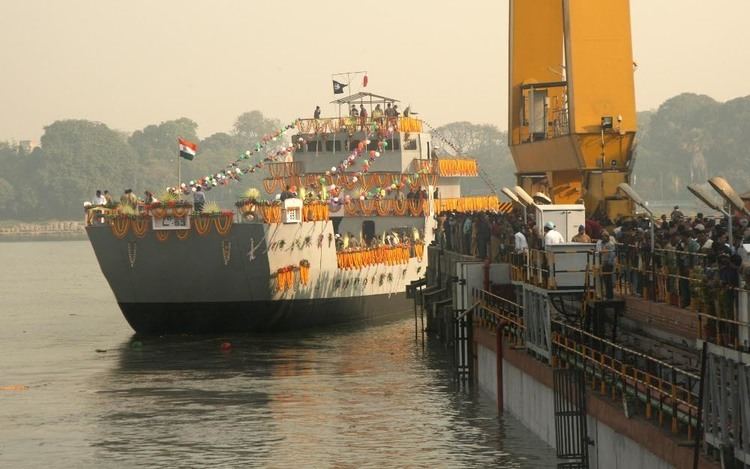Name LCU MK IV class Built 2011– | Builders GRSE Preceded by LCU Mk III Building 2 | |
 | ||
Mk IV LCU class vessels are operated by the Indian Navy to augment the Indian Navy's amphibious capability.
Contents
The ship can be deployed for maritime roles like maritime security, beaching, un-beaching, humanitarian relief operations and evacuation from distant islands, search and rescue operations and peace-keeping missions. The LCUs will likely be inducted into the tri-service command responsible for India's Andaman and Nicobar island territory. The Indian Navy is developing the chain of islands as an amphibious warfare hub, possibly to counterbalance China's growing military influence in the Indian Ocean Region. The craft may also operate in the Arabian Sea.
History
GRSE signed an agreement for INR21 billion (USD340 million) with the Indian Navy for designing and building eight LCU ships on 28 September 2011 and construction began in September 2012. The craft are built from 16 hull blocks, the largest of which weighs 25 tons. Block production has been outsourced to smaller yards around Kolkata.
Design
The remarkable feature of these LCU Mark-IV ships are that, these have been developed in-house by GRSE as per requirements specified by Indian Navy. The ships are designed for multipurpose amphibious operations that are jointly carried out by Indian Navy and Indian Army for ensuring maritime security of Andaman and Nicobar Islands in the Bay of Bengal, and Lakshadweep Islands in the Arabian Sea.
The ship is 63 meters long, overall beam of 11 meters, a hull draught of 2.2 meters and displaces around 830 tons. They can transport by sea and beach at far away islands, to deploy army tanks and troops. With a maximum speed of 15 knots and an endurance of more than 1500 nautical miles, the ship is driven by twin-propeller fixed-pitch propulsion system powered by two MTU 16V 4000 M53 marine diesel engines(each 1840 KWs). Each engine drives a Fundivisa-supplied fixed-pitch propeller through a Reintjes WAF 763 P reversible reduction gearbox. Two 30mm CRN-91 mounted guns with a Bharat Electronics-built EON-51 electro-optic director provide artillery fire support during landing operations.
The LCU has lift capacity for up to 216 personnel, including 160 fully equipped soldiers and 56 crew and 145 tonnes of military equipment. The vehicle lift capacity is one 65 ton tank like the Arjun or two 45 ton tanks like the T-72/80, or four 13.5 ton BMP Infantry Fighting Vehicles. It is fitted with a hydraulic bow ramp which enables loading and unloading of combat equipment and vehicles on beaching. Ballast arrangement further ensures desired trim for smooth beaching operations.
